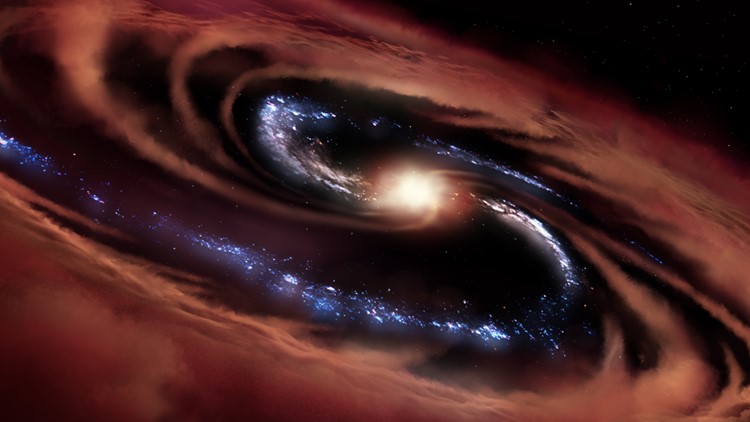While black holes usually take the upper hand in consuming galaxies, NASA says one more than 5.25 billion light-years away seems to be holding out.
Galaxy CQ4479 is defying the odds of one of the "hungriest" black holes, which are thought to consume so much surrounding material that they put an end to their host galaxies, by at least temporarily staying alive.
NASA says it appears to be surviving the ravenous forces through birthing new stars-- about 100 the size of the sun each year to be exact.
The discovery was brought to light by NASA's Stratospheric Observatory for Infrared Astronomy (SOFIA) telescope on an airplane, according to a press release.
NASA says this discovery can help explain how massive galaxies came to be, even as the universe is dominated by galaxies no-longer able to form stars.
“This shows us that the growth of active black holes doesn’t stop star birth instantaneously, which goes against all the current scientific predictions,” said Allison Kirkpatrick, assistant professor at the University of Kansas in Lawrence Kansas. “It’s causing us to re-think our theories on how galaxies evolve.”
According to NASA, the "feasting process" of a black hole is so intense that it creates one of the "brightest objects in the universe," otherwise known as a quasar. But what Kirkpatrick said was surprising to find with CQ4479 is that it has something called a "cold quasar" that still keeps some of its cold gas used to form stars while the black hole feasts.
It's the first time researchers have had a detailed look into the topic, allowing them to measure the black hole's growth, birth rate and the amount of cold gas that remains to fuel the galaxy.
“We were surprised to see another oddball galaxy that defies current theories,” said Kevin Cooke, a postdoctoral researcher at the University of Kansas. “If this tandem growth continues both the black hole and the stars surrounding it would triple in mass before the galaxy reaches the end of its life.”
Scientists say that continued research with SOFIA is needed to learn if other galaxies have or could react similarly to CQ4479.
“SOFIA lets us see into this brief window of time where the two processes can co-exist,” Cooke said. “It’s the only telescope capable of studying star birth in this galaxy without being overwhelmed by the intensely luminous quasar.”
►Breaking news and weather alerts: Get the free 10 Tampa Bay app
►Stay In the Know! Sign up now for the Brightside Blend Newsletter



